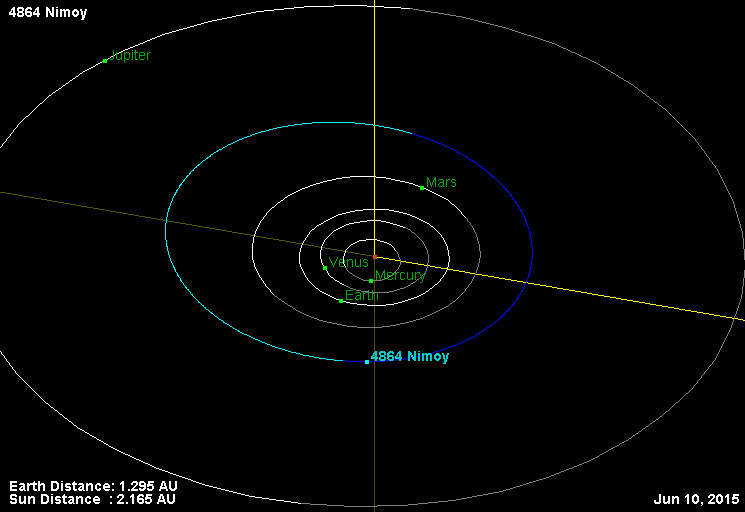Trek On, Spock: Asteroid Now Carries Leonard Nimoy's Name

The legacy of Leonard Nimoy has reached the Final Frontier: on June 2, a 6-mile-wide (9.6 km) asteroid was named 4864 Nimoy in his honor. The asteroid travels within the main asteroid belt — between Mars and Jupiter — and orbits the sun every 3.9 years. It was originally discovered at the European Southern Observatory in 1988.
Nimoy, who died in February at age 83, is beloved as the character Mr. Spock in "Star Trek," and this isn't the first time that his character's namesake has been in space — more or less. In 1985, an astronomer, James Gibson, named an asteroid 2309 Mr. Spock after the cat that accompanied him as he worked long hours at an observatory in Argentina. The cat itself was named for its pointy-eared resemblance to the "Star Trek" character originated by Nimoy.
Gibson argued that asteroids should be named only for those who had contributed to or had been important to astronomy in some way, and that his cat, by keeping him company during his work, fit the bill. Nonetheless, the naming started a debate that culminated in the IAU asking that asteroids not be named for pets.
This new asteroid is named for Nimoy himself, whose portrayal of Spock has undoubtedly contributed to many budding scientists' fascination and wonder at the universe. Nimoy himself has also been involved in space science, narrating a video about NASA's Dawn asteroid mission and speaking at the space shuttle Enterprise’s landing.
Given the impact "Star Trek" has had on how the public perceives space exploration, honoring Leonard Nimoy's legacy as Spock with an asteroid, in our view, is only logical.
Email Sarah Lewin at slewin@space.com or follow her @SarahExplains. Follow us @Spacedotcom, Facebook and Google+. Original article on Space.com.
Get the Space.com Newsletter
Breaking space news, the latest updates on rocket launches, skywatching events and more!
Join our Space Forums to keep talking space on the latest missions, night sky and more! And if you have a news tip, correction or comment, let us know at: community@space.com.

Sarah Lewin started writing for Space.com in June of 2015 as a Staff Writer and became Associate Editor in 2019 . Her work has been featured by Scientific American, IEEE Spectrum, Quanta Magazine, Wired, The Scientist, Science Friday and WGBH's Inside NOVA. Sarah has an MA from NYU's Science, Health and Environmental Reporting Program and an AB in mathematics from Brown University. When not writing, reading or thinking about space, Sarah enjoys musical theatre and mathematical papercraft. She is currently Assistant News Editor at Scientific American. You can follow her on Twitter @SarahExplains.









